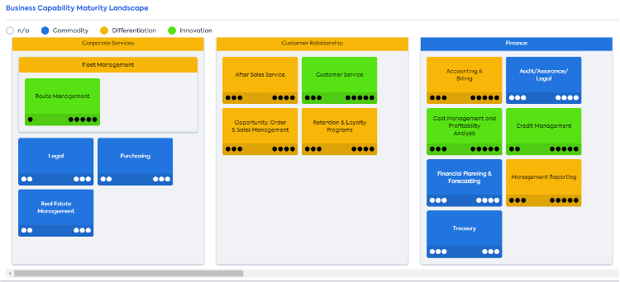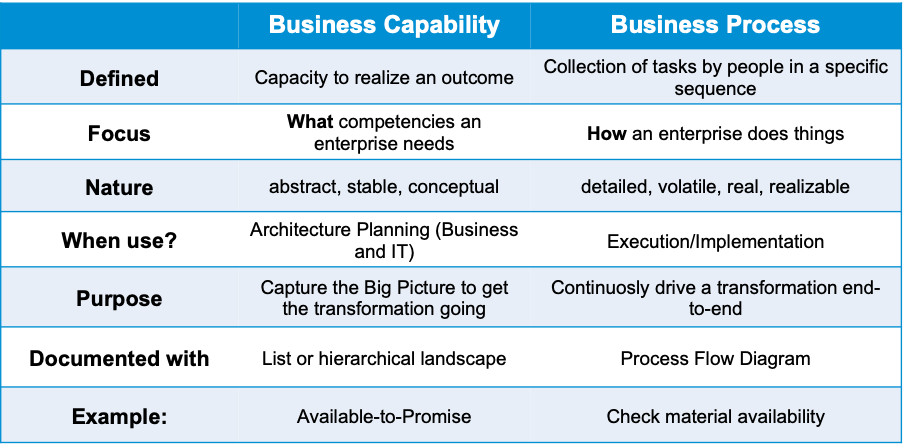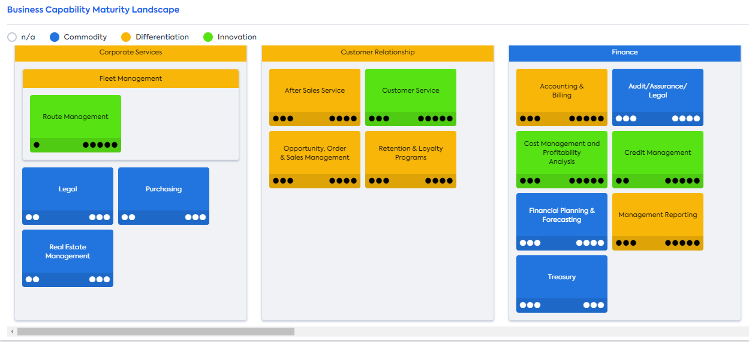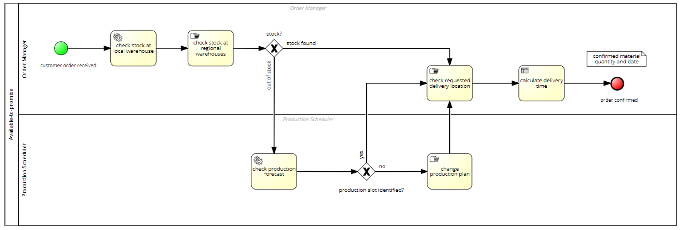
This is the second post in a series about the relationship between Business Process Management and Enterprise Architecture. In the first blog post, I covered the basics of where these two methodologies come from and why they are bound to intersect.
Let’s take a closer look at the connection between EA and business process management (BPM) by turning our attention to the difference between business processes and business capabilities.
Business processes are naturally what everything in BPM centers around, whether we’re talking about documentation, analysis, or improvement. Business capabilities are key for EA practitioners who use them for architecture planning and portfolio management.
Both business processes and business capabilities are used to model the complex reality of a business and break this reality down into what’s needed to accomplish specific tasks.
How do business capabilities and processes compare? How do they relate?
A capability defines what a business needs to be able to do to achieve an outcome as part of its mission. The capability doesn't explain how the business process does that. Describing this process typically requires more details than describing the capability. Specifically, it calls for describing what tasks need to be executed, in which sequence, by whom, as well as the decisions that need to be made – on which basis and by whom – to complete the process
Business capabilities and business processes offer different perspectives – what and how – on the same business reality. Take available-to-promise as an example. This capability describes the capacity or ability to realize an outcome: responding to a customer inquiry with a confirmed quantity of product that can be delivered at a certain place and time.
The process describes which individual tasks need to be completed, by whom, and in which sequence, to generate this response: the order manager receives a request from a customer, checks the stock, then the local production forecast, and then checks other orders with higher priority, then the requested delivery location and calculates the days forward, etc. There might be even more steps to take.
The capability is rather abstract and conceptual. For a given business model, it is also a concept that does not change over time. The business process, on the other hand, can change even within the same business model as the business evolves. We may want to automate some or all the steps of the process, for example, or include a check of the stock at regional or global production sites if checking at the local factory is not successful. We can do that for all our customers or only for VIP customers with very large orders. All in all, a business process is much more detailed, actionable, and changeable.
Here's one way to understand the differences at a glance:

What is the use case for business capabilities?
The digital transformations I have seen our customers pursue often involve a transformation of their architecture. Transforming the architecture for an entire enterprise requires a bird's eye view of the business. Enterprise architects creating target architectures for the entire enterprise rely on a certain level of abstraction. You simply cannot go into too much detail if you want to capture all key lines of business and the entire value chain in a decent amount of time.
Using business capabilities, IT can easily align with the business around goals, objectives, and priorities – which is imperative when planning a transformation that is in line with the business strategy. Business capabilities also provide the level of abstraction required for quickly creating the first version of a target architecture.
In a typical target architecture planning exercise, capabilities required by the business are defined and categorized by defined criteria, e.g., strategic relevance, maturity, sustainability, and so on. This exercise creates Big Picture transparency and supports decision-making. It helps answer questions like: “Do we keep on-premises, legacy solutions because they are good enough?” or “Do we build the application in-house – because it will help us stand out in the marketplace – or do we turn to a SaaS vendor?”
Business capability maps drive the conversation about what the business needs to be capable of doing and help set priorities for change.
 Hierarchical business capability landscape in LeanIX EAM comparing current and target maturity of capabilities.
Hierarchical business capability landscape in LeanIX EAM comparing current and target maturity of capabilities.
At SAP Signavio, all applications – whether we’re talking S/4HANA, SAP Ariba, or SuccessFactors – are mapped to business capabilities, allowing us to determine the right solution components to meet business needs. Customers can access the capabilities through the One Process Acceleration Layer (OPAL) to speed up architecture planning and connect capabilities to the applications they plan to transform.
LeanIX Enterprise Architecture picks this up and extends components from other software vendors as well as components developed in-house.
What is the use case for business processes?
When we have completed the discovery and preparation phase of a project, and the time has come to execute the plans we’ve created and implement the desired target state, we need a more granular view of things. We need more details to create a model closer to the reality of those ultimately responsible for running the business.
This is where business processes come in. A business process describes the tasks, their sequence, the system – and even the transaction – to execute, as well as the roles of those accountable and responsible. A business process leaves little uncertainty and helps align all stakeholders around a common target.
 BPMN 2.0 Diagram in SAP Signavio Process Manager describing how available-to-promise check is performed including roles, tasks, gateways, and start and end events. An annotation for each task describes whether it is manual or automatic.
BPMN 2.0 Diagram in SAP Signavio Process Manager describing how available-to-promise check is performed including roles, tasks, gateways, and start and end events. An annotation for each task describes whether it is manual or automatic.
Harmonizing business processes is a common theme in many transformations. Harmonizing processes across geographies, sites, business units, and divisions serves as a powerful lever for lowering costs of operation and sets the foundation for continuous improvement. Which event triggers the process? Where do we have decision points? Which tasks or decisions can we automate? Which decisions require human judgment? Which risks are involved in a process? Do we have sufficient mitigation and control for risks? Not enough? Too much?
Figuring all this out is a team sport! It’s a continuous process, not just a one-off. And it needs a single source of truth. Business processes give everyone in the enterprise clarity on how things will be done in the future.
Connecting business capabilities and business processes
Business capabilities are great for planning; business processes are great for execution. When planning and execution happen in different worlds, things get left behind. We miss out on agility, responsiveness, accuracy, on-the-ground learning, and so much more. Connecting capabilities and processes allows for better planning and execution. In a world where transformation is continuous, connecting business capabilities with business processes helps enterprises be more agile and reduces iterations to get things right.
Knowing which capabilities are required for my mission-critical processes allows me to quickly understand which applications really run the show. And over time, we can measure the quality of planning. You cannot measure capabilities. But you can measure the performance of processes behind the capabilities that were prioritized in the last release cycle.
Many benefits come from interlinking both disciplines. In the next blog, I will take a closer look at these benefits. What’s in for the enterprise architects when they turn to BPM practitioners? And what’s in for the BPM practice when connecting with the Enterprise Architecture? And in the lifecycle of a transformation, how do EA efforts compare to BPM efforts? Stay tuned
To learn more, check out our on-demand webinar, "Unleash the power of Business Process Transformation and Enterprise Architecture."





